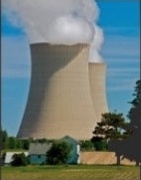By David Zirin and Jules Boykoff
At first glance, this must appear to be the politest anti-Olympics movement imaginable. The group fighting against the games is known as Okotowari Olympics 2020, or No Thanks Olympics 2020. However, after spending a day among them, it is clear that the honchos in the Japanese Olympic Committee should be worried. These organizers are feisty, whip-smart, and their goal is nothing short of preventing next year’s Olympics from landing in Tokyo. Their concerns are based on the recent history of what happens to a city after the Olympics descend: debt, displacement, and hyper-militarization. For them, it is also a question of priorities.
In the words of one organizer, Tomiko, “People are still suffering from [the earthquake and Fukushima nuclear meltdown of] 2011. The government needs to spend money to help those still suffering, not on the Olympics.”
This group of activists and agitators spent the day taking a disparate group of three dozen people—many from past or future Olympic cities—on a tour of Olympic building projects already underway. By the time they were finished, it was very clear why they were protesting.
Akio Yoshida, who, like several of the Okotowari organizers, cut her teeth doing work in solidarity with Tokyo’s large homeless population, said, “The displacement already happening will just move more people from their homes. All Olympics discriminate. Some people are prioritized. Others are disregarded.” After touring future Olympic sites, we could all see who the winners will be: well-connected developers, construction magnates, and security barons. Meanwhile, the working poor and houseless will be left out.
We saw a body of water slated for open-water swimming, with bacteria levels dangerous to the human touch. We saw a baseball stadium, the home of the famed Yakult Swallows, that will be demolished, only to be rebuilt a block away to meet the specifications of the Olympics. We saw public spaces such as a youth aquatic center that will be shut down to make way for Olympic sports, while young people will have to spend next summer with their noses pressed against the glass. We saw a beautifully designed, massive public stadium that was built only for volleyball and will be handed over after the Olympics to a private business concern. The stadium cost $300,000,000.
[…]
Read more.
Also see These Women Have Lost Their Homes to the Olympics in Tokyo—Twice




